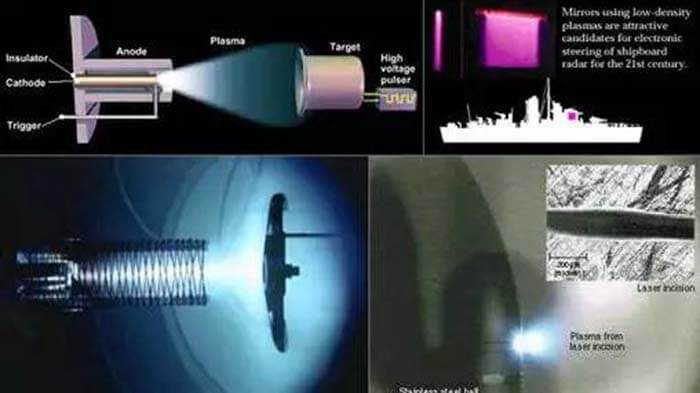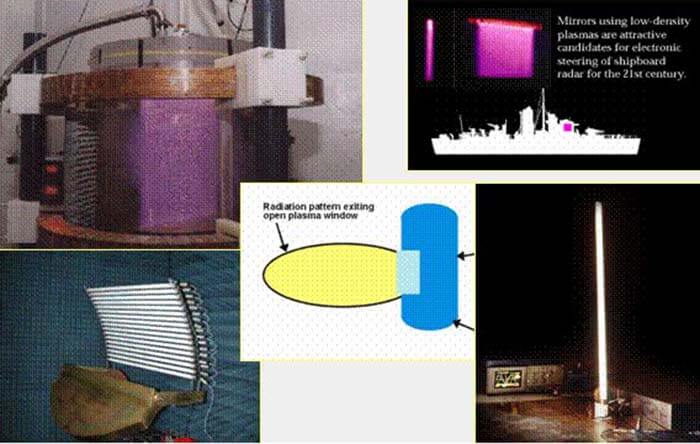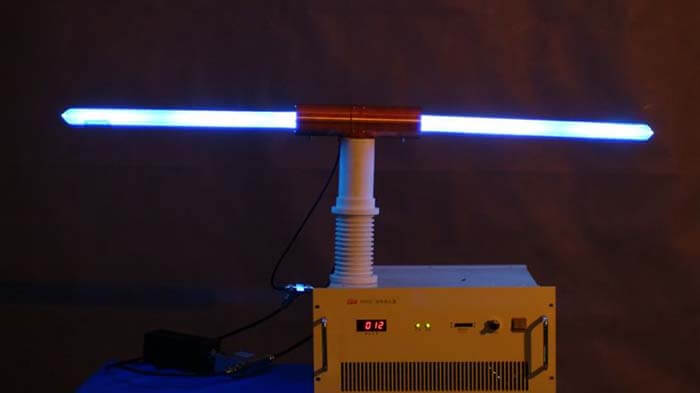Plasma antenna technology does not use a traditional metal design but uses gas plasma antenna technology. This new antenna design technology has great development potential in military and civilian applications. Compared with traditional antennas, plasma antennas have unparalleled advantages.
Antennas are an important part of all radio frequency communication systems.
Plasma antenna – the invisible and intangible antenna.
What is plasma antenna?
A plasma antenna is a type of radio antenna currently in development in which plasma is used instead of the metal elements of a traditional antenna.
How does a plasma antenna work?
In an ionized gas plasma antenna, a gas is ionized to create a plasma. Unlike gases, plasmas have very high electrical conductivity so it is possible for radio frequency signals to travel through them so that they act as a driven element (such as a dipole antenna) to radiate radio waves, or to receive them.
The transmission and reception of radio frequency signals range from general broadcasting to various complex weapon systems. The common point is the use of metal conductors of a certain size to radiate or receive electromagnetic waves at the selected frequency.
Once a metal antenna is designed, it is difficult to change its structure. In actual use, the impedance matching and other parameters cannot easily reach a more ideal state due to the influence of factors such as environment and matching, which reduces the efficiency of the metal antenna.
Since the plasma antenna uses ionized gas as the electromagnetic energy transmission medium, the bandwidth, frequency, gain, and directivity of the antenna can be dynamically reconstructed by controlling parameters such as the shape and intensity of the plasma.
Compared with the traditional antenna, the antenna designed with plasma antenna technology will have higher efficiency, lighter weight, smaller volume, shorter size, and wider bandwidth. Since the plasma antenna is in the form of gas, it is more concealed in terms of appearance and fluid mechanics. Many western countries have carried out military research on plasma antennas, and their important scientific research and application value are self-evident.

Plasma antenna technology advantages
This new antenna design concept has many unique advantages compared with traditional metal antennas, including:
Invisibility
When the ionization state is removed, the plasma antenna will not produce backscattered radar waves, nor will it absorb high-power microwave radiation that can reduce the effectiveness of electronic countermeasures;
Adapt to a variety of signals
Plasma antenna has the characteristics of dynamic reconstruction, such as bandwidth, frequency, gain, and directivity;
Facilitate remote deployment
Plasma antennas can be lighter and smaller than conventional antenna designs;
Higher efficiency
The plasma antenna technology reduces the impact excitation effect very well, thereby improving the performance of the short pulse radar.
These unique advantages will make the plasma antenna technology have broad application prospects, such as for naval surface ships and submarine radar antennas, stealth aircraft radar antennas, and ballistic missile defense radar antennas.

Plasma antenna technology disadvantages
Anderson first proposed the concept of plasma antenna technology in the mid-1990s to make it easier for submarines to communicate when working underwater. There are three major defects in using metal antennas to emit electromagnetic waves:
First of all, the low-frequency metal antenna is bulky and easily exposes the target;
Secondly, when metal antennas work at high frequencies, although they can be reduced in size, they are easily exposed due to the special signals they emit;
Finally, metal antennas are susceptible to human interference.
The appearance of the plasma antenna is similar to that of a fluorescent tube. It uses an ionized gas tube to send and receive radio waves. By controlling the plasma shape and intensity and other parameters, the antenna bandwidth, frequency, gain, and directivity can be dynamically reconstructed.
Converting the radio frequency, it can also work in a phased band like a metal antenna, with higher efficiency and smaller size, which basically overcomes all the above problems.
Since the plasma antenna only reacts to signals equal to or less than its own operating frequency, high-frequency signals usually used to interfere with radio waves have no effect on it.
The antenna itself can also be nested with each other, sending and receiving multiple radio frequencies at the same time without interference. Working under the same pulse current, the signal is still clear, and the energy consumption is 1000 times smaller than that of ordinary antennas.
Once the antenna is turned off, it no longer reflects radio waves, and the lower the operating frequency, the less noticeable it is. This concealment makes it more suitable for the secret military field.
An experiment conducted by the Hughes Laboratory in the United States shows that the use of plasma antenna technology can reduce the radar cross-sectional area of a 13cm microwave reflector in the frequency range of 4 to 14 GHz by an average of 20dB, that is, the signal strength of the radar acquired echo is weakened. Only up to the original’s 1%. US Navy scientists are currently using ionized plasma to develop a radar system that is challenging for weapon design and military tactics.
If you have any antenna questions, please read our ANTENNA FAQ section, if you still cannot get the answer you need, please contact us.
You may also be interested in the below articles.




